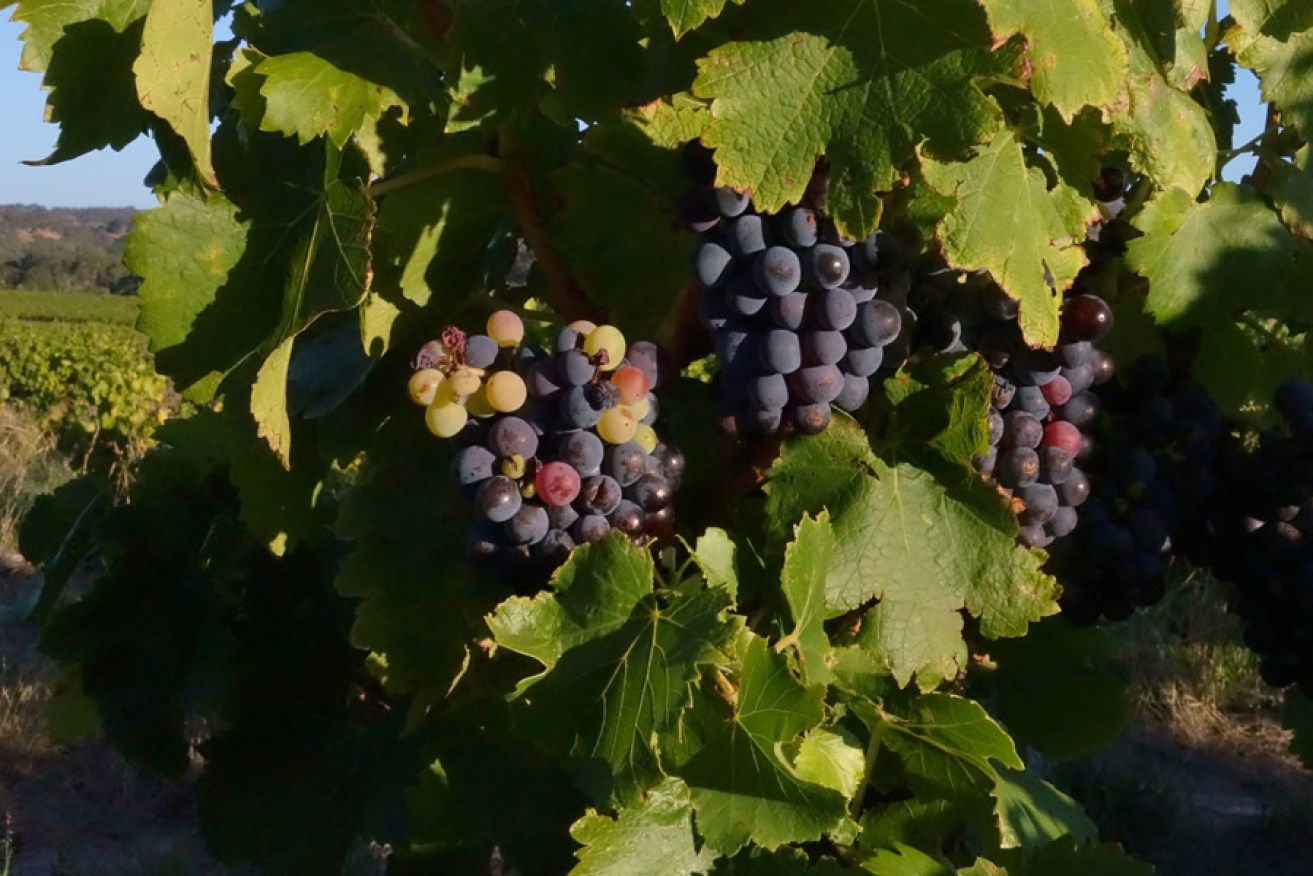A mixed bunch: 2014 vintage update


Uneven ripening is rife in some areas this vintage. Photo: Philip White
As these beautiful sweet days roll on, those whose grapes survived the sickening roller-coaster weather of January seem delighted that in the end, Bacchus and Pan smiled on them. Churlish and remorseful, they nudged aside Thor and Tyr and Weth (them be grumpy Norse goddies.)
To recap, we had two heatwaves. I won’t gild the lily. But Adelaide seemed almost boastful of being the hottest city in the world on January 16. Then, to paraphrase myself summarising, the confounding figures you can find at the Bureau of Meteorology show five days in a row above 42C. From January 13 to 17, daily temperatures were 12C or more above the normal average. It hit 45.1C on the 14th. That hell ended in the wettest 24-hour period in 44 years, when different vignobles copped from 70mm to 130mm.
Now we’ve had day after day – weeks – of breezy cool with even cooler nights. An Indian summer. Smooth early autumn. It smells like autumn. Not just where I live near Kangarilla, but right through the south Mount Lofty Ranges. Which extend from Clare to Cape Jervis.
Vignerons in bad-luck patches have had it much worse than others, and some of that luck’s probably due in the more mindlessly managed vineyards. Many are mournful about the yields; the grievous who got raisins, raw hen-and-chicken (uneven ripening is rife), split berries, botrytis and less-than-lovely results generally, are delighted to make a sale, if indeed they did. Of those poor souls right across the state, many who did haven’t made a profit.
Cool old Coonawarra hasn’t properly started, although some reports are glowing. It needs sunshine and dry. Peter Gago (Penfolds) says that in the south-east in general, the slow flowering seems to have hit the Cabernet harder than the Shiraz, giving uneven ripening within the bunches. He says Padthaway looks particularly good. They’ve hardly started, really. There’s a long way to go.
But let’s go north. In Clare, David O’Leary (O’Leary-Walker) says the district’s about 70 per cent done. “We start picking at Auburn,” he said of the region’s warmest, southern extreme, “and move north. It’ll be up to Sevenhill this week.”
He spoke of reasonably good vital statistics but lower yields than expected, and acids on the decline. Riesling has bigger berries, but mercifully very little splitting, perhaps because Clare didn’t get the ridiculous rain that some places got further south down the Mount Lofty Ranges. Fingers crossed.
O’Leary makes it sounds as if the Riesling will give bigger, more accessible flavours and therefore be better drinkers early in the piece, but that’s only my interpretation of his measured account.
Michael Waugh (Greenock Creek) says the Barossa is two-and-a-half weeks into it. He reports very black wines of yields that would make a less stoic vigneron shiver. “Halfway through and we haven’t hit a tonne to the acre yet,” he said. Michael never took quite as much rain as some bits of the Barossa, so he’s counting his blessings. He said the skins were still tough, and his fruit not showing much bother other than scarcity.
“Those Shiraz are growing a lot of air this year.” Bob McLean (McLean’s Farm/Barr-Eden) reports this as a common Barossadeutscher line about the extremely low Shiraz yields in some places. Some blokes expecting 20 tonnes have ended up with three. Up on the Barossa Tops, McLean’s vineyard is too early to forecast: his earliest harvest is still at least a week away. Bob seems even a touch more optimistic than usual.
Gago speaks similarly of the Ranges in general, suggesting it’s too early to say much other than the crop looks fairly patchy, falling in with O’Leary’s guarded report on his family’s Oakbank vineyard. Andrew Hardy (Petaluma) says that early damage during flowering has slain many high blocks, but others are of promising quality, if very low on yield.
In the uplands down my way – Onkaparinga Hills/Clarendon/Kuitpo/Willunga Hills – the crop is edging toward ripening, and it looks pretty good, if again, a little patchy. Right through the ranges, those whose fruit was still green and hard through the heatwave and the rain have the least trouble with moulds and splitting. On his little patch of the piedmont at Willunga, Roger Pike (Marius) is quite cheery about the nick of his fruit, which he’s started picking.
As for greater McLaren Vale? The best is yet to come, but of what I’ve seen, a lot of skins are showing the stress of the heat and rain: what looks pretty good, if a little low, on the vine, has skins that are very thin and slippery in the winery: the berries aren’t holding very well. I suspect this is the result of the lignins decaying through heat, stretching, then perhaps a little botrytis that wasn’t evident to the eye when it occurred before the breezes dried it out.
As in 2011, the better vignerons will use that to their advantage. A tiny botrytis hit serves mainly to convert a little of the grapes’ sugar to glycerol, which can add a more luxurious mouthfeel to the best wines.
As Gago summarises, “I’m not making any predictions about quality till three or four days of ferment are done.”
So. Small amounts of good wine seems the most likely outcome, the rest, well …




